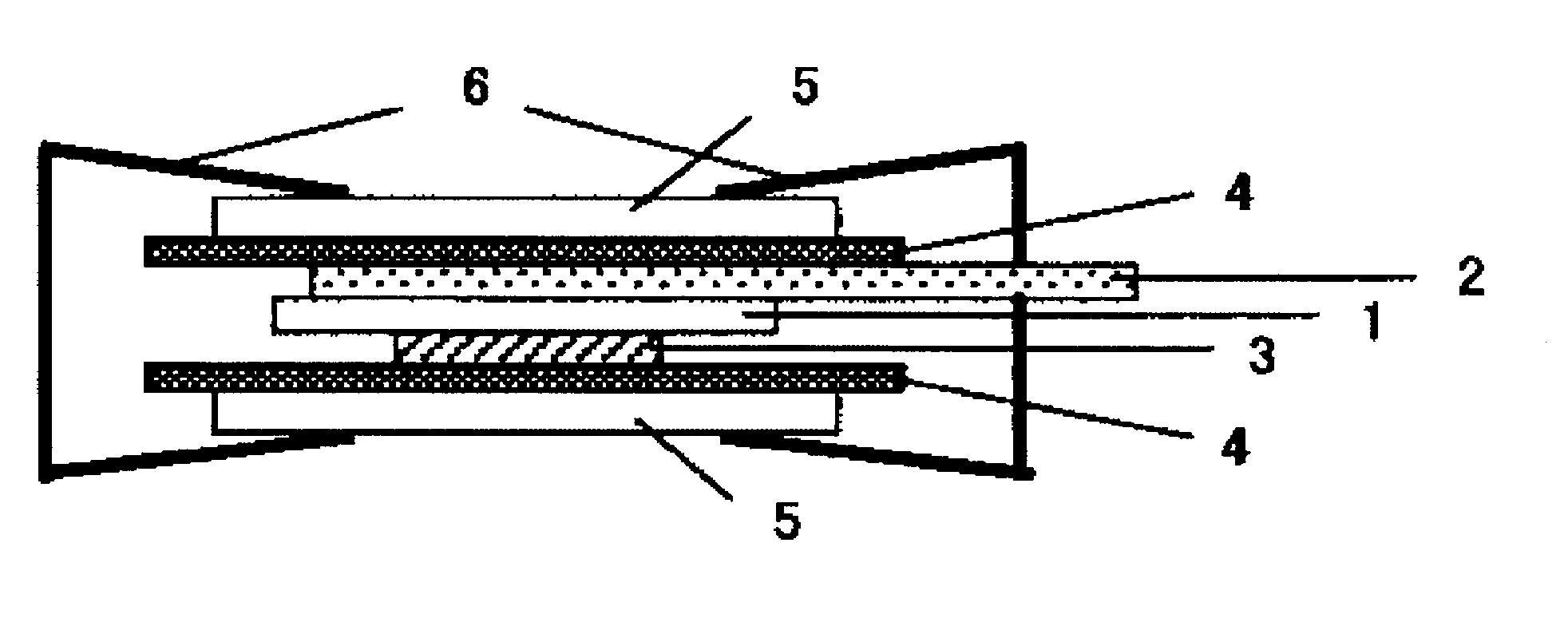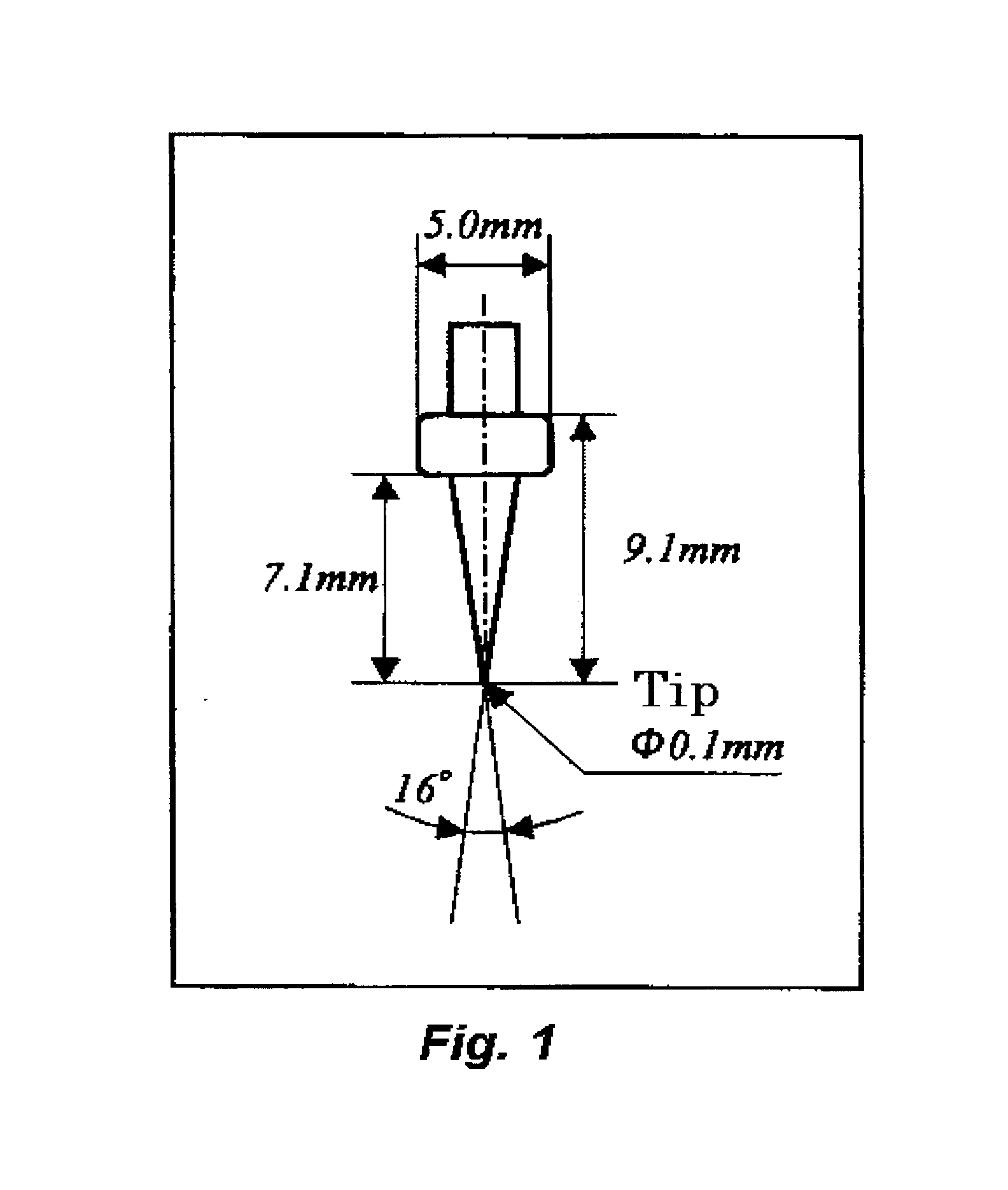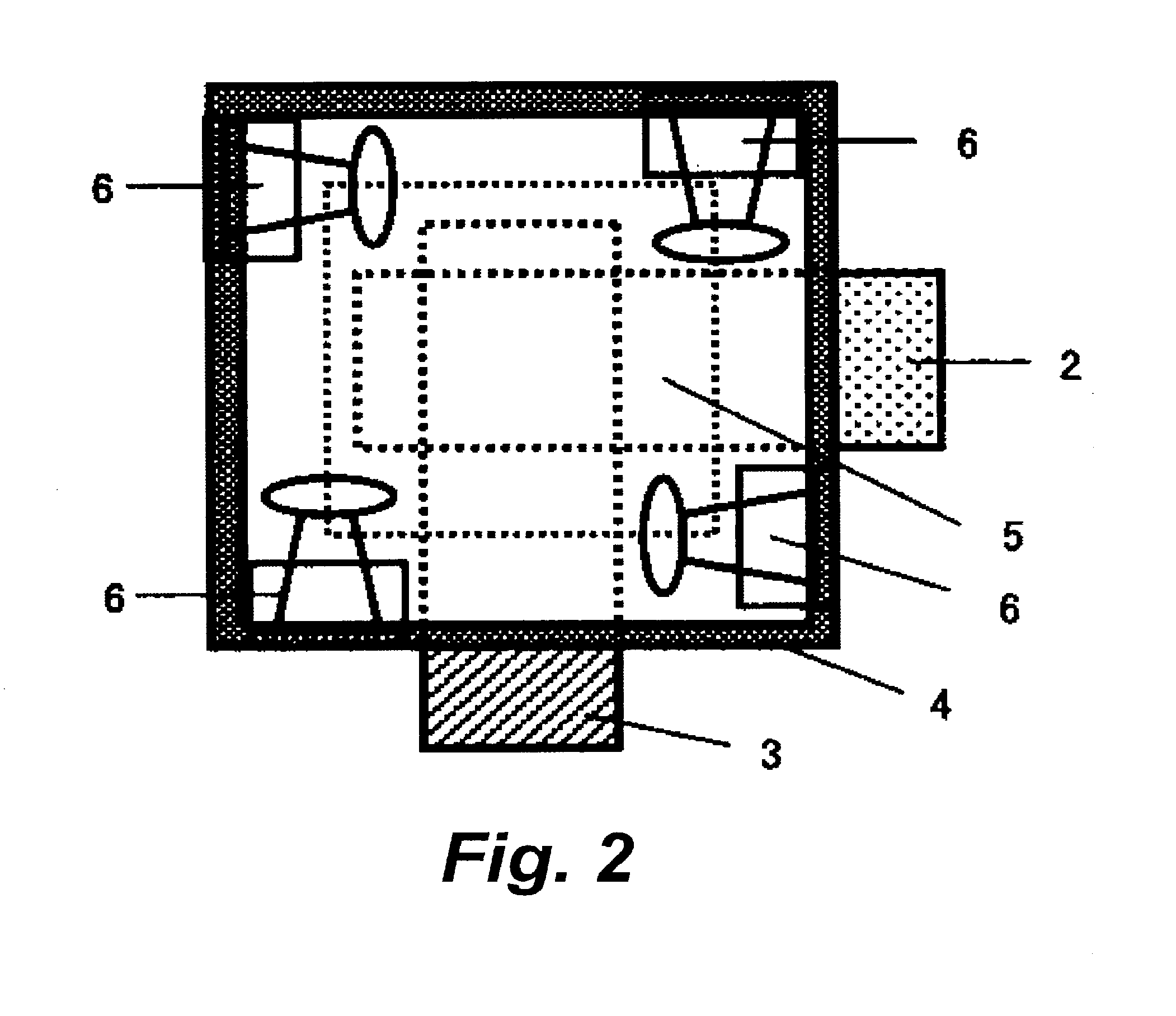Polyolefin microporous membrane and separator for nonaqueous electrolyte battery
a technology of polyolefin microporous membrane and electrolyte battery, which is applied in the direction of batteries, cell components, cell component details, etc., can solve the problems of inability to reach short-circuit, insufficient satisfaction, and uneven pressure distribution of batteries, and achieve excellent permeability and mechanical strength, and pores fine
- Summary
- Abstract
- Description
- Claims
- Application Information
AI Technical Summary
Benefits of technology
Problems solved by technology
Method used
Image
Examples
example 1
[0100]18 parts by mass of high density polyethylene “SH800” (trademark, made by Asahi Kasei Chemicals Corporation) having a viscosity average molecular weight (Mv) of 270,000, 12 parts by mass of an ultra-high molecular weight polyethylene “UH850” (trademark, made by Asahi Kasei Chemicals Corporation) having Mv of 2,000,000, 20 parts by mass of silica “DM10C” (trademark, made by TOKUYAMA Corporation, hydrophobic treatment was carried out with dimethyldichlorosilane) having an average primary particle diameter of 15 nm, 30 parts by mass of a liquid paraffin “SMOIL P-350P” (trademark, made by Matsumura Oil Research Corp.) as a plasticizer, and 0.3 part by mass of pentaerythrityl-tetrakis-[3-(3,5-di-t-butyl-4-hydroxyphenyl)propionate] as an antioxidant were added and preliminarily mixed by a super mixer. The resultant mixture was fed into a feeding inlet of a twin screw extruder in which two screws rotate in the same direction by a feeder. Further, the liquid paraffin was side-fed into...
example 2
[0101]A microporous membrane was obtained in the same manner as in Example 1 except for using 9 parts by mass of the high density polyethylene having Mv of 270,000, 13.5 parts by mass of the ultra-high molecular weight polyethylene having Mv of 2,000,000, 27.5 parts by mass of the silica “DM10C” (trademark, made by TOKUYAMA Corporation, hydrophobic treatment was carried out with dimethyldichlorosilane) having an average primary particle diameter of 15 nm, and 40 parts by mass of the liquid paraffin in Example 1 and preliminarily mixing by a super mixer. Membrane preparation conditions and membrane characteristics are shown in Table 1.
example 3
[0102]A microporous membrane was obtained in the same manner as in Example 1 except for using 24 parts by mass of the high density polyethylene having Mv of 270,000, 16 parts by mass of the ultra-high molecular weight polyethylene having Mv of 2,000,000, 10 parts by mass of the silica “DM10C” (trademark, made by TOKUYAMA Corporation, hydrophobic treatment was carried out with dimethyldichlorosilane) having an average primary particle diameter of 15 nm, and 20 parts by mass of the liquid paraffin and preliminarily mixing by a super mixer, and changing a setting temperature of lateral stretching to 125° C. and a setting temperature in an relaxing part to 130° C. Membrane preparation conditions and membrane characteristics are shown in Table 1.
PUM
| Property | Measurement | Unit |
|---|---|---|
| particle diameter | aaaaa | aaaaa |
| particle diameter | aaaaa | aaaaa |
| particle diameter | aaaaa | aaaaa |
Abstract
Description
Claims
Application Information
 Login to View More
Login to View More - R&D
- Intellectual Property
- Life Sciences
- Materials
- Tech Scout
- Unparalleled Data Quality
- Higher Quality Content
- 60% Fewer Hallucinations
Browse by: Latest US Patents, China's latest patents, Technical Efficacy Thesaurus, Application Domain, Technology Topic, Popular Technical Reports.
© 2025 PatSnap. All rights reserved.Legal|Privacy policy|Modern Slavery Act Transparency Statement|Sitemap|About US| Contact US: help@patsnap.com



